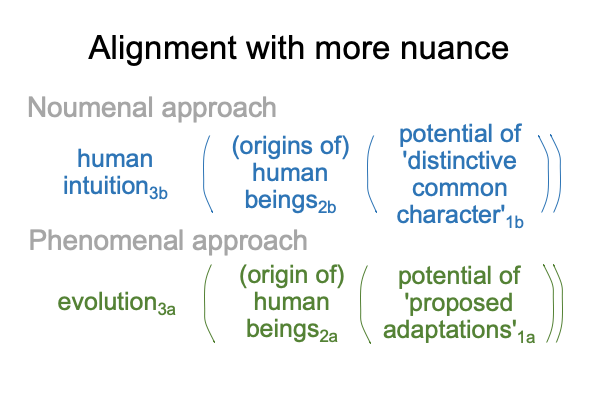0033 The last blog adds more nuance to the ongoing two-level interscope.

0034 Evolutionary scientists propose adaptations that solve problems in the Pleistocene environment. Human genes somehow allow the phenotypes that carry these adaptations.
One adaptation is the use of Oldewan, then Acheulean, then more sophisticated stone tools. This is not the only adaptation. More on that later.
The body of Turbon’s article provides a litany of adaptations.
0035 In Section 1, hominins become smarter in general, with special intelligences mixed in. So, a person can not only talk (which is smart) but knows a lot about something that is of interest (which is special intelligence).
Surely, both DNA and the environment of evolutionary adaptation, genetics and natural history, are relevant. But, there is something more, as noted later in Turbon’s article, as well as in Comments on Steven Mithen’s Book (1996) Prehistory of Mind.
0035 In Section 2.1, language is an adaptation that increases adaptability.
Here, Turbon refers to “language” as speech-alone talk. Today, many evolutionary scientists acknowledge that it is difficult to formulate how language evolves in the milieu of speech. However, as discussed in Comments on Robert Berwick and Noam Chomsky’s book (2016) Why only Us? More likely, “language”, evolves in the milieu of hand talk.I continue Turbon’s list in the next blog.
